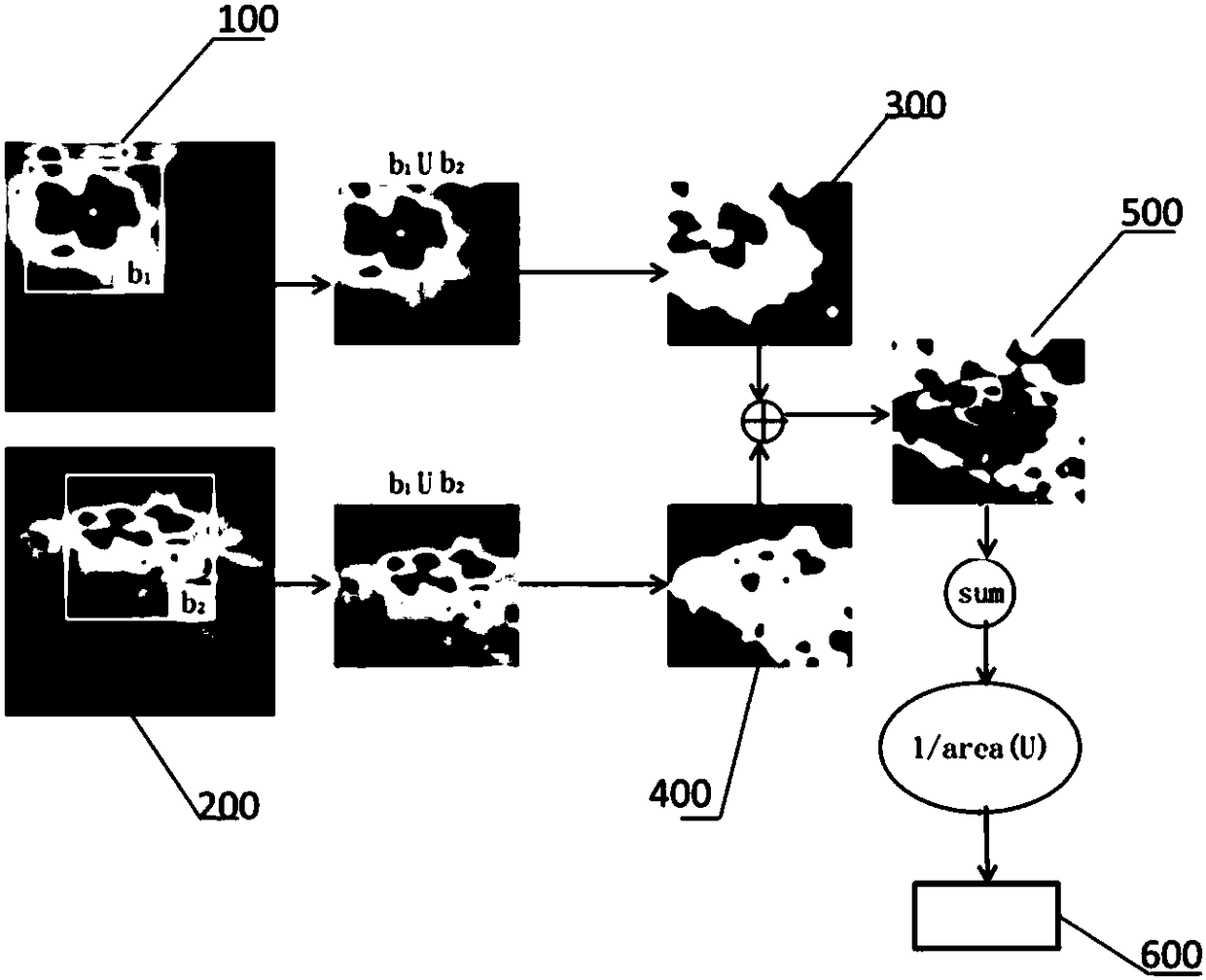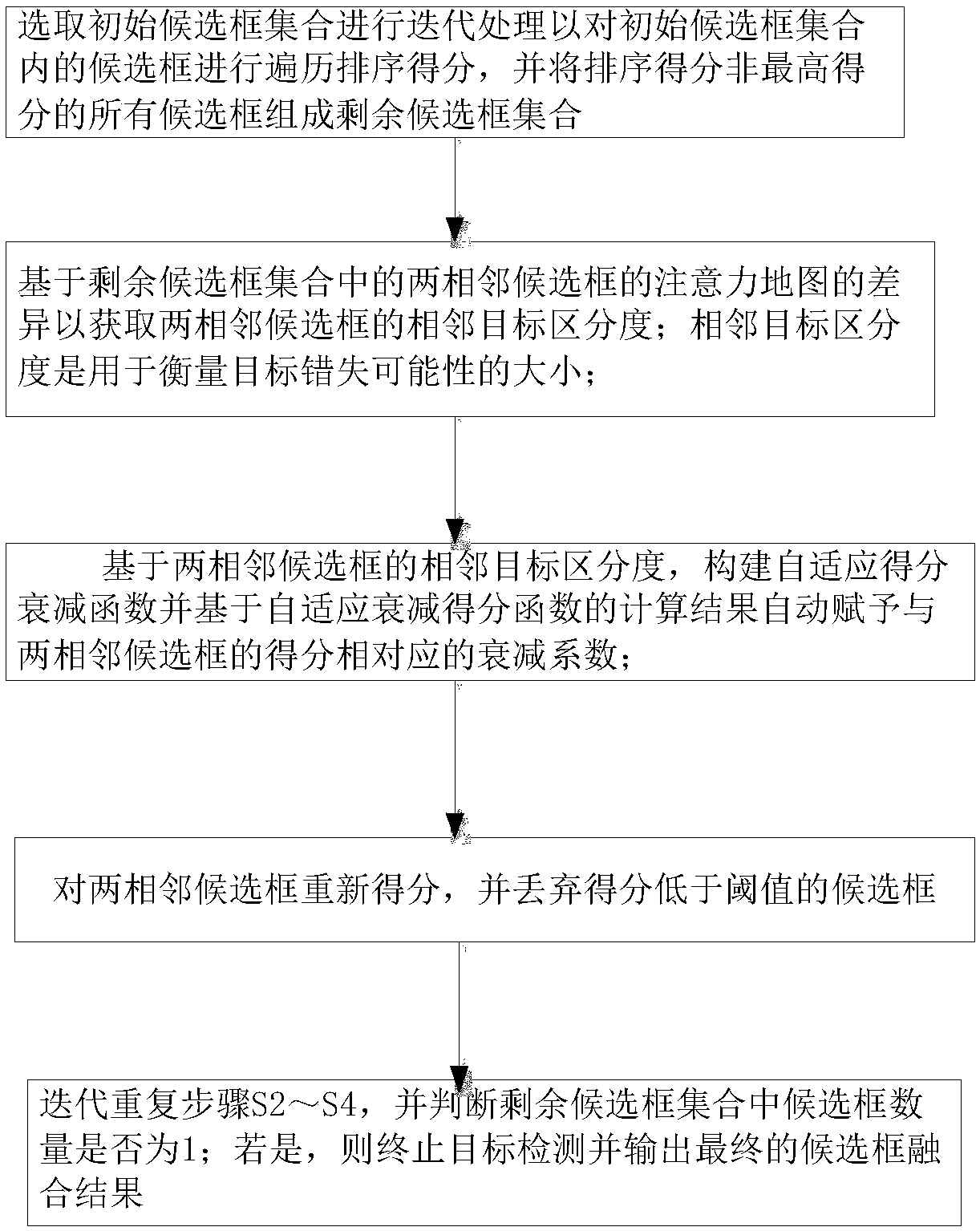Target detection method for self-adaptive non-maximum suppression
A non-maximum suppression and target detection technology, applied in the direction of instruments, character and pattern recognition, computer components, etc., can solve the problem of sacrificing precision and recall rate, and achieve the effect of improving target detection performance
- Summary
- Abstract
- Description
- Claims
- Application Information
AI Technical Summary
Problems solved by technology
Method used
Image
Examples
Embodiment 1
[0028] refer to figure 2 , this embodiment discloses an adaptive non-maximum suppression target detection method, comprising steps:
[0029] S1: Select an initial set of candidate frames for iterative processing to traverse and rank the candidate frames in the initial set of candidate frames, and form all candidate frames with ranking scores other than the highest score into the remaining set of candidate frames; among them, for the candidate with the highest score The frame processing method is to send the candidate frame with the highest score directly into the target detection result.
[0030] S2: Based on the difference between the attention maps of the two adjacent candidate frames in the remaining candidate frame set, the adjacent target discrimination degree of the two adjacent candidate frames is obtained; the adjacent target discrimination degree is used to measure the possibility of missing the target .
[0031] S3: Construct an adaptive score attenuation function...
PUM
 Login to View More
Login to View More Abstract
Description
Claims
Application Information
 Login to View More
Login to View More - R&D
- Intellectual Property
- Life Sciences
- Materials
- Tech Scout
- Unparalleled Data Quality
- Higher Quality Content
- 60% Fewer Hallucinations
Browse by: Latest US Patents, China's latest patents, Technical Efficacy Thesaurus, Application Domain, Technology Topic, Popular Technical Reports.
© 2025 PatSnap. All rights reserved.Legal|Privacy policy|Modern Slavery Act Transparency Statement|Sitemap|About US| Contact US: help@patsnap.com



